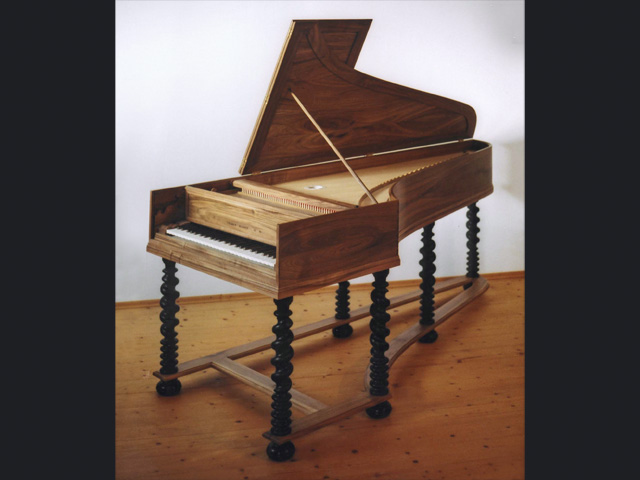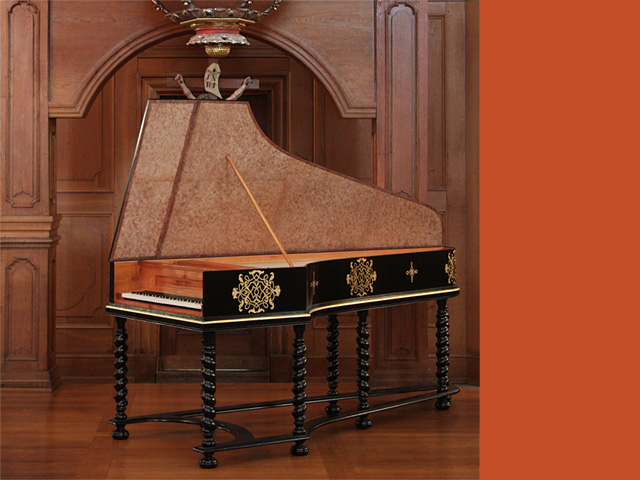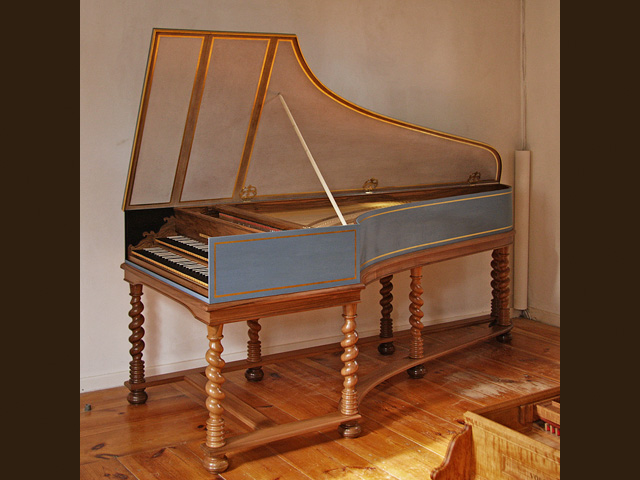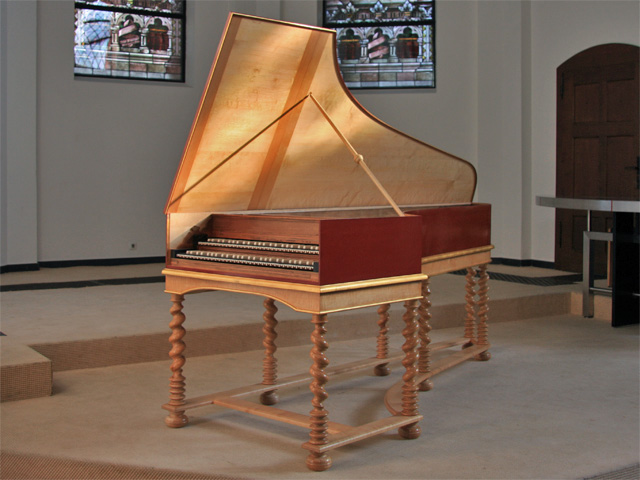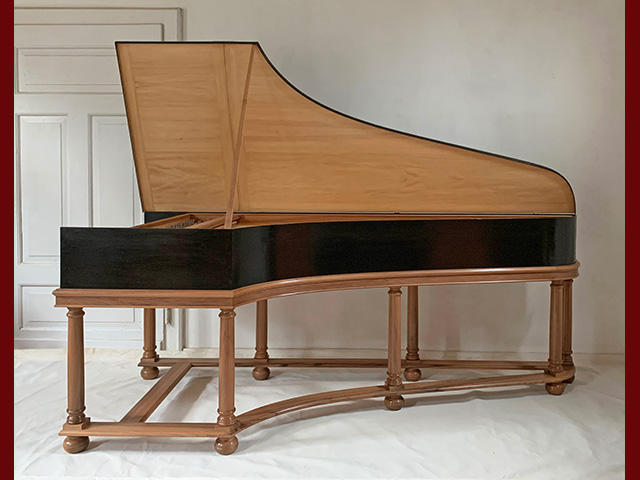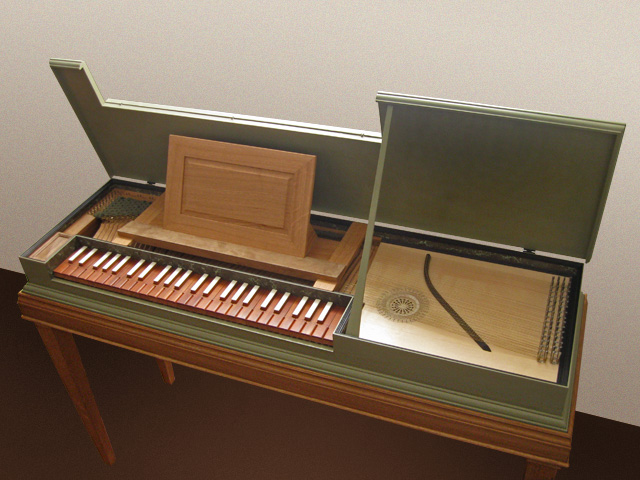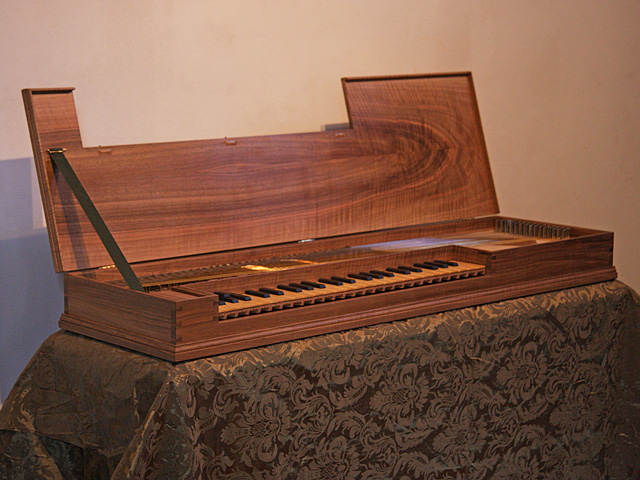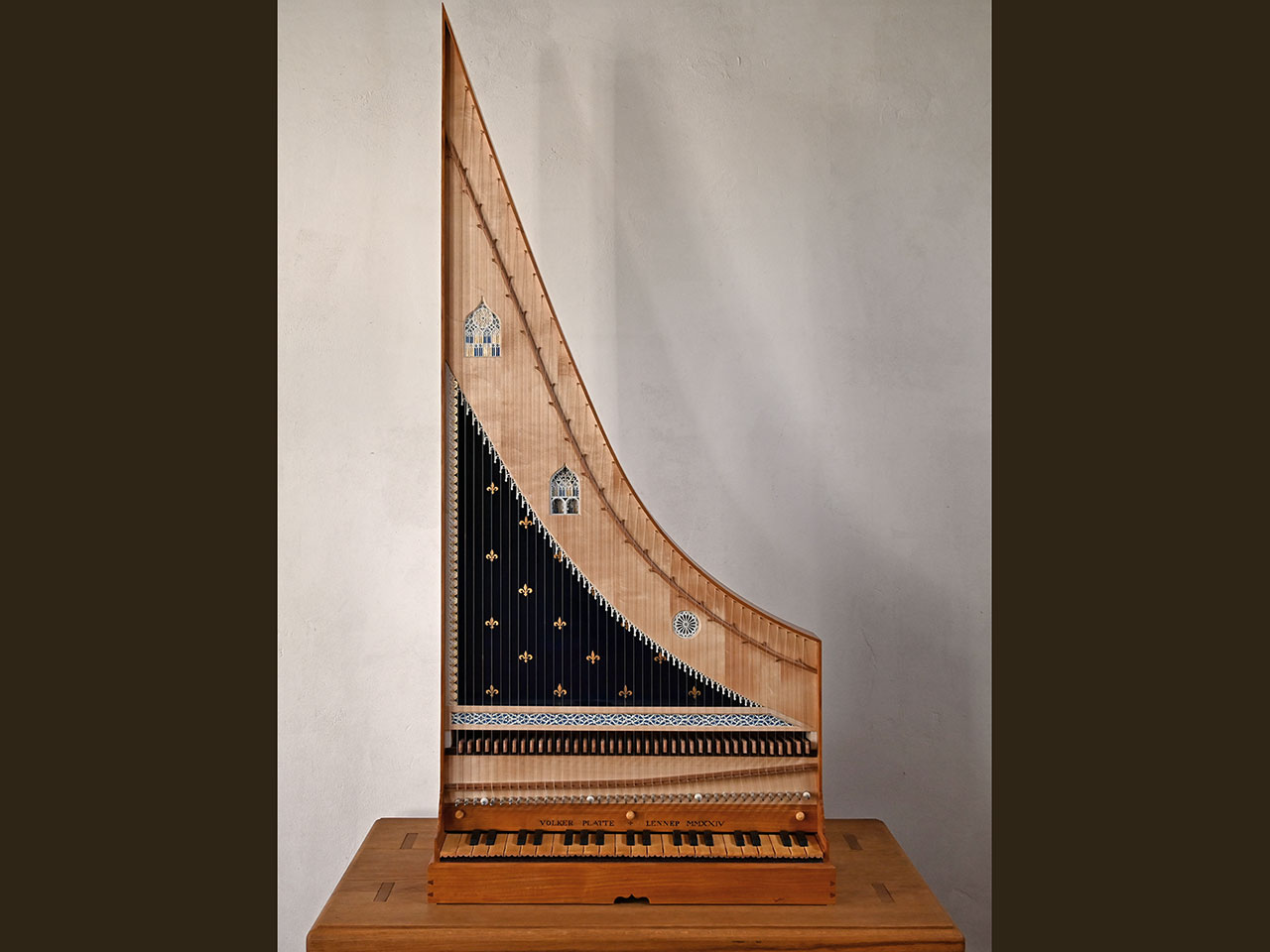Instruments
German Instruments
The instruments are built from plain wood (case of solid walnut, maple, cherry etc.) or painted upon a chalk base. The natural key tops are of ebony, the sharps are of pear with a layer of bone. With the Zell-instruments the natural key tops are of bone, the sharps are made of ebony. The stand consists of an upper and lower frame with six to eight turned legs.
Please click on one of the following links to jump to the particular instrument list:
I. Harpsichords
II. Clavichords
III. Clavicytheriums
Photos: © Volker Platte (except as noted otherwise)

